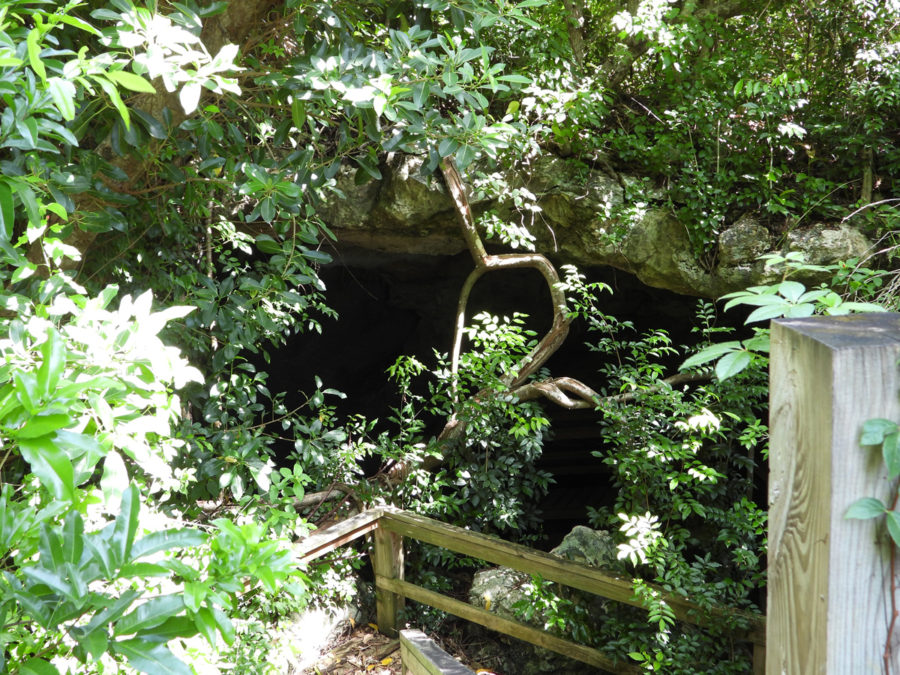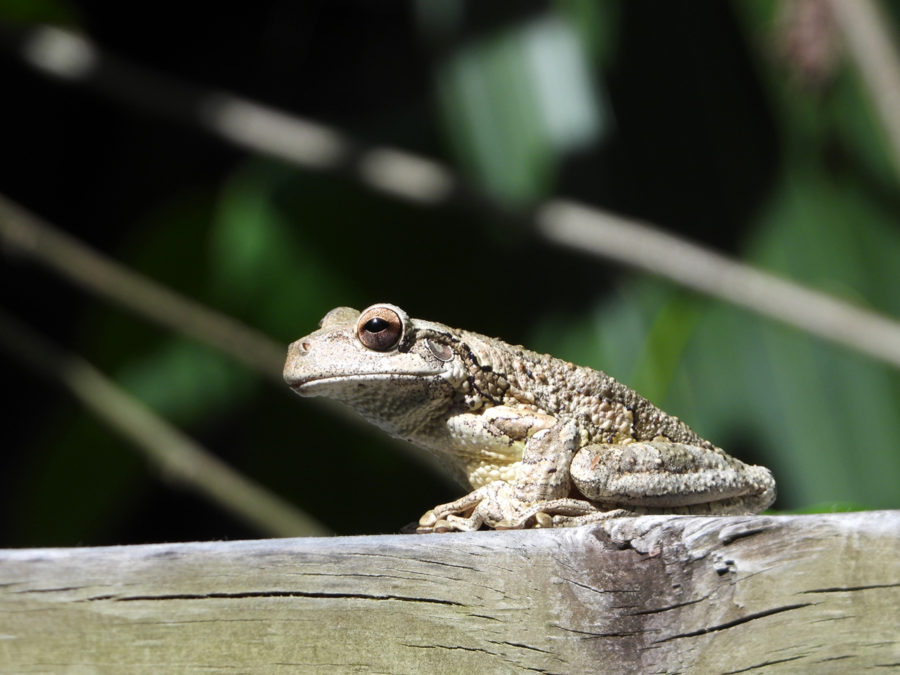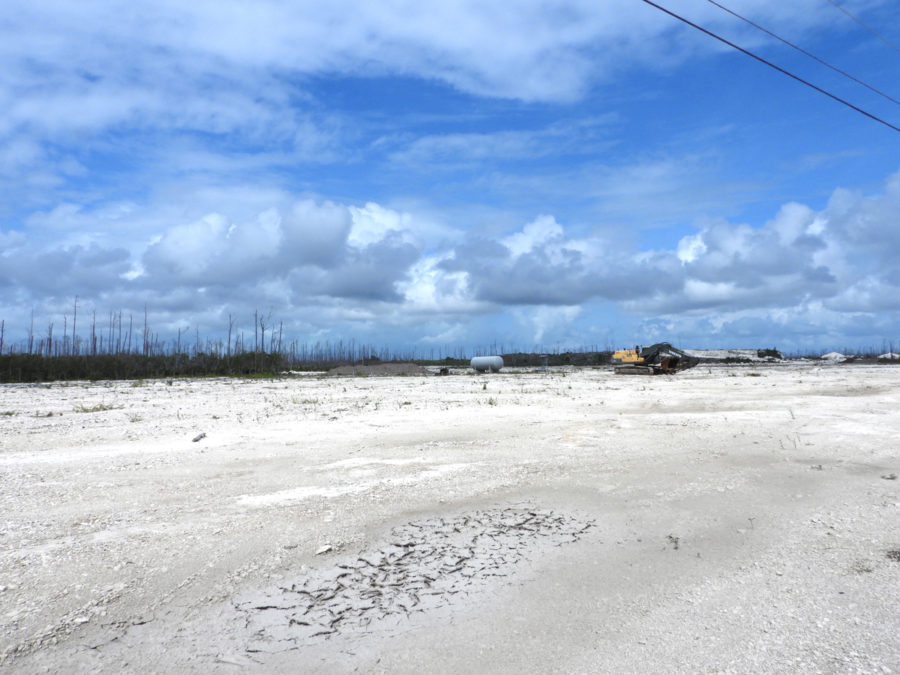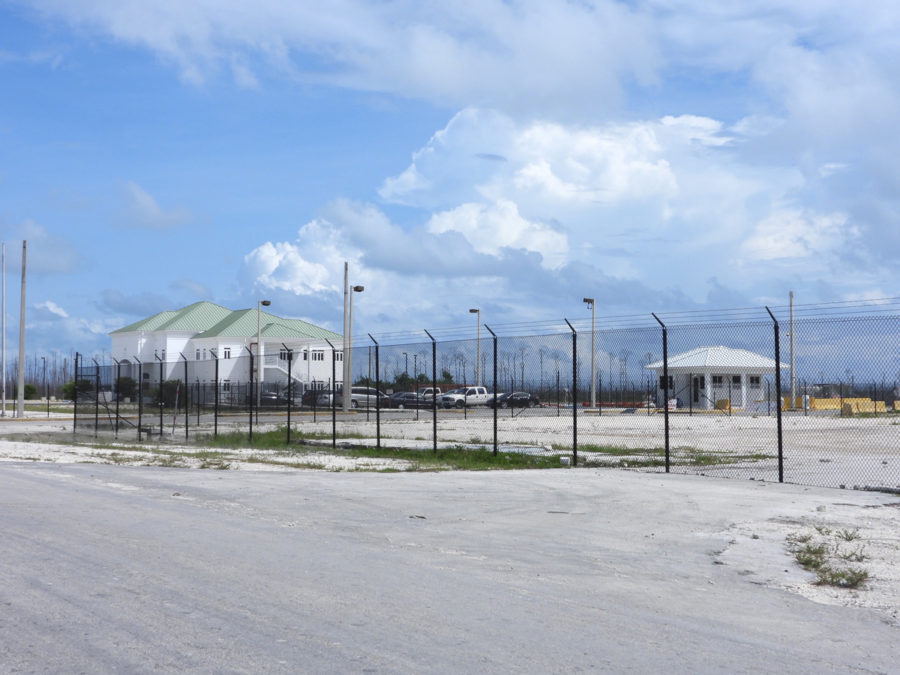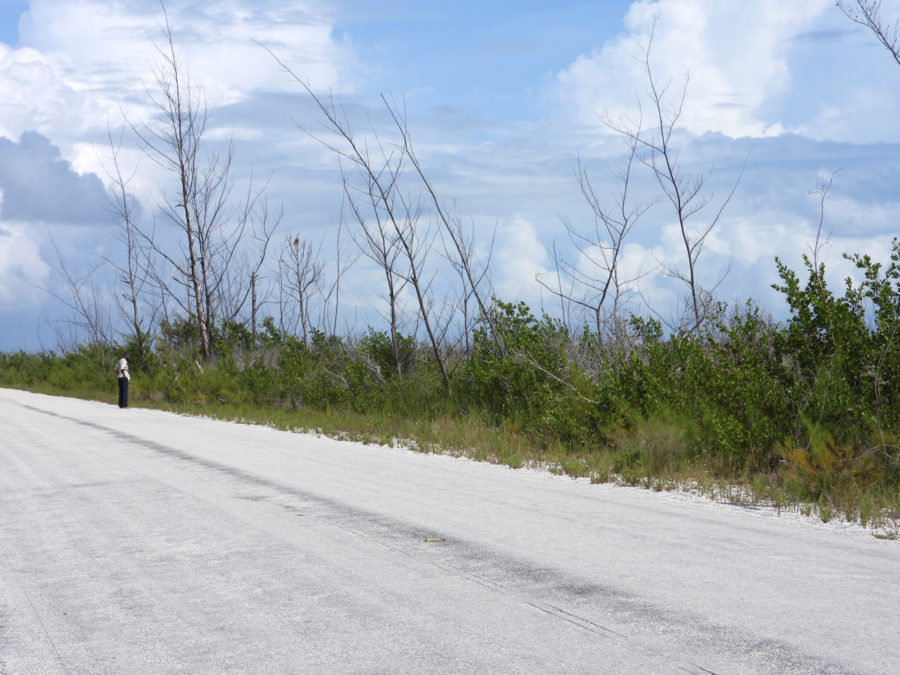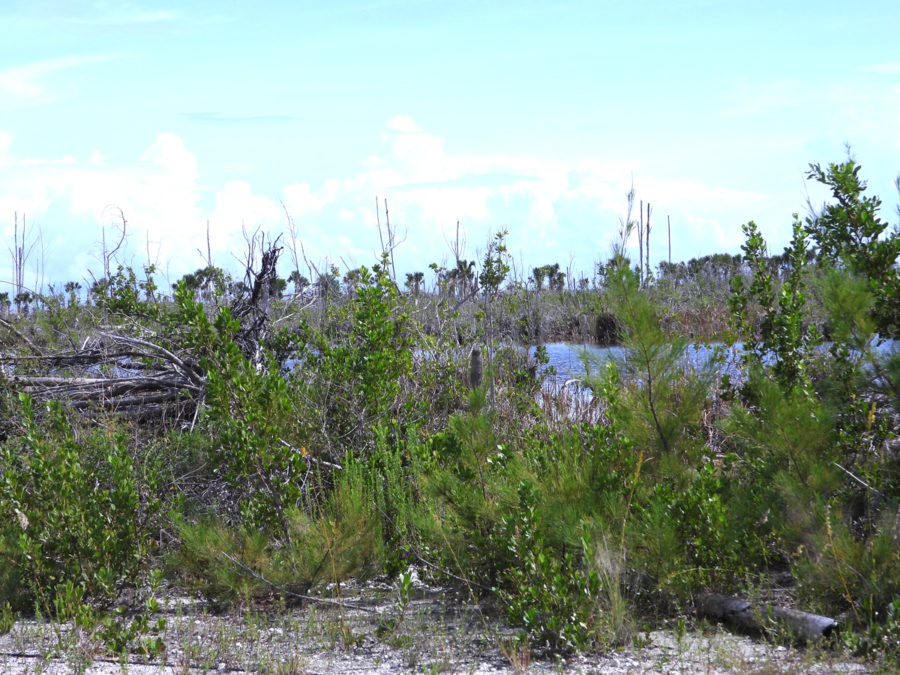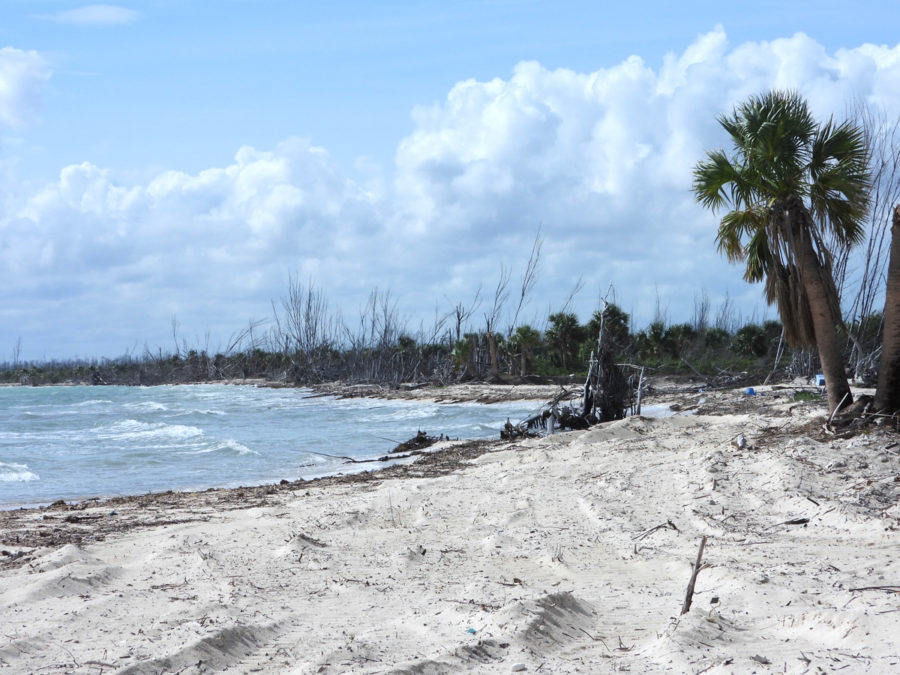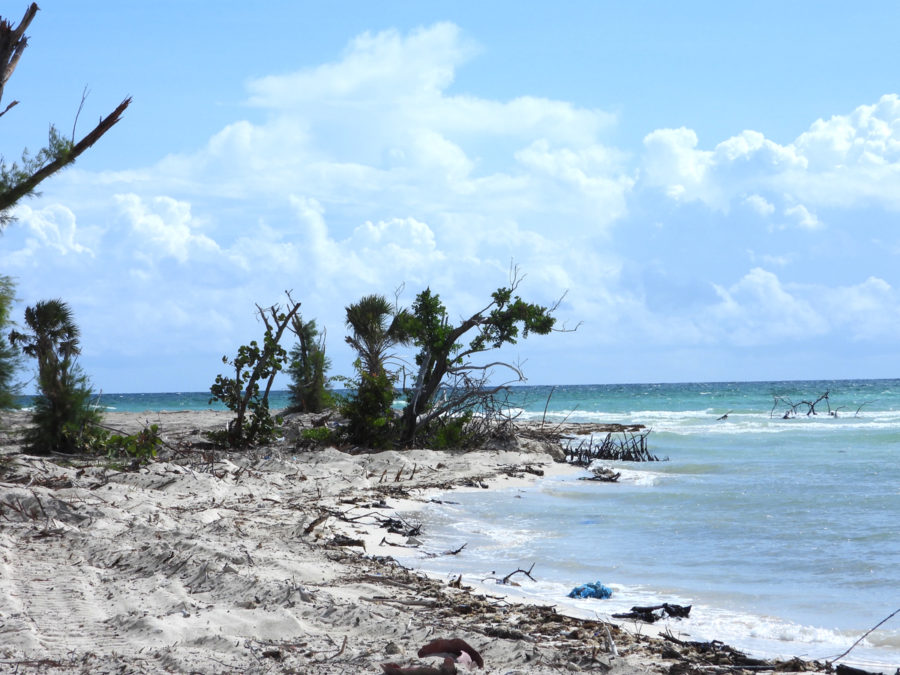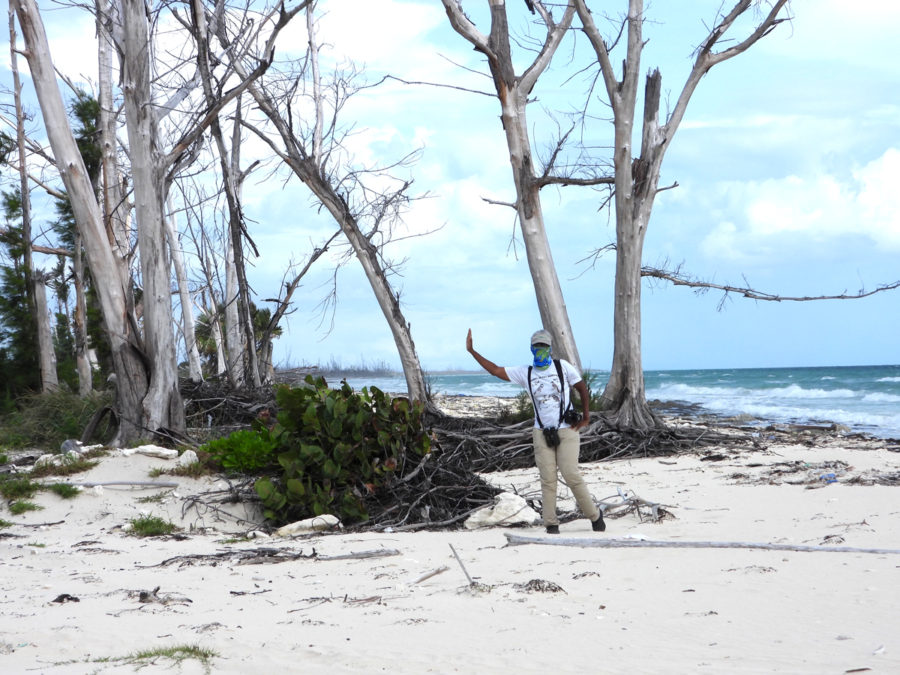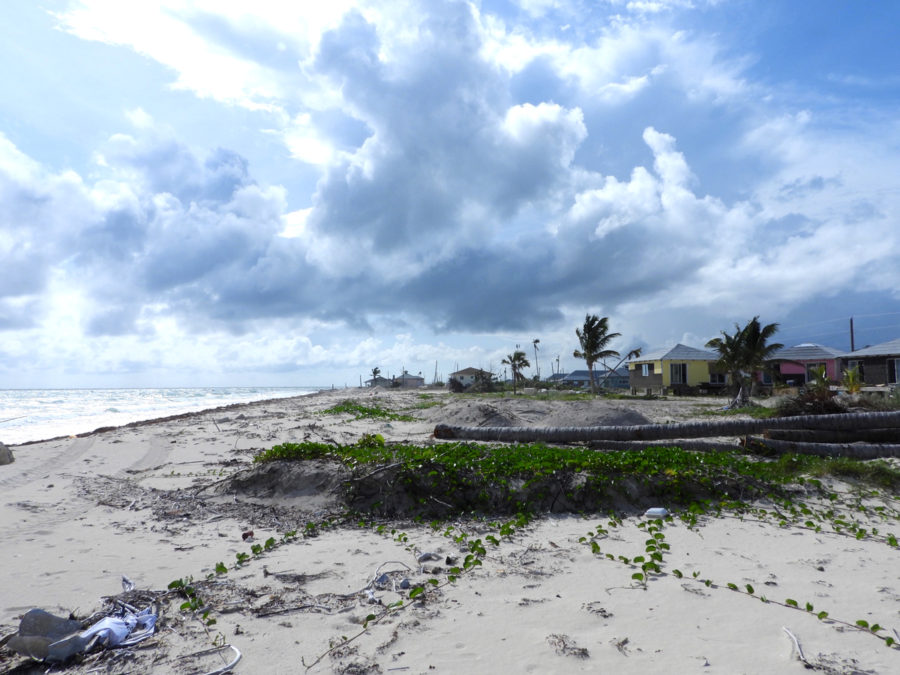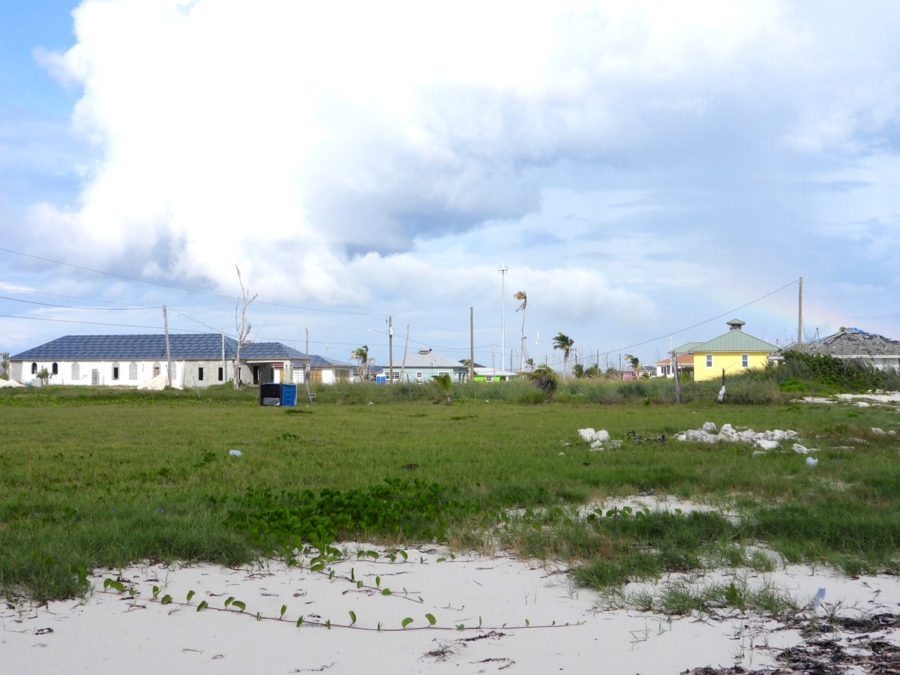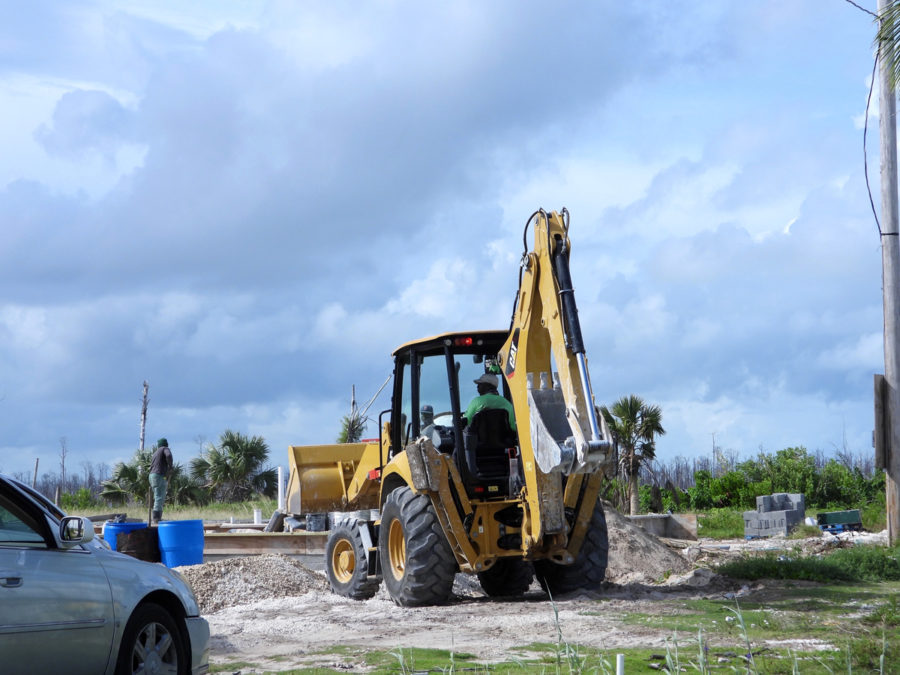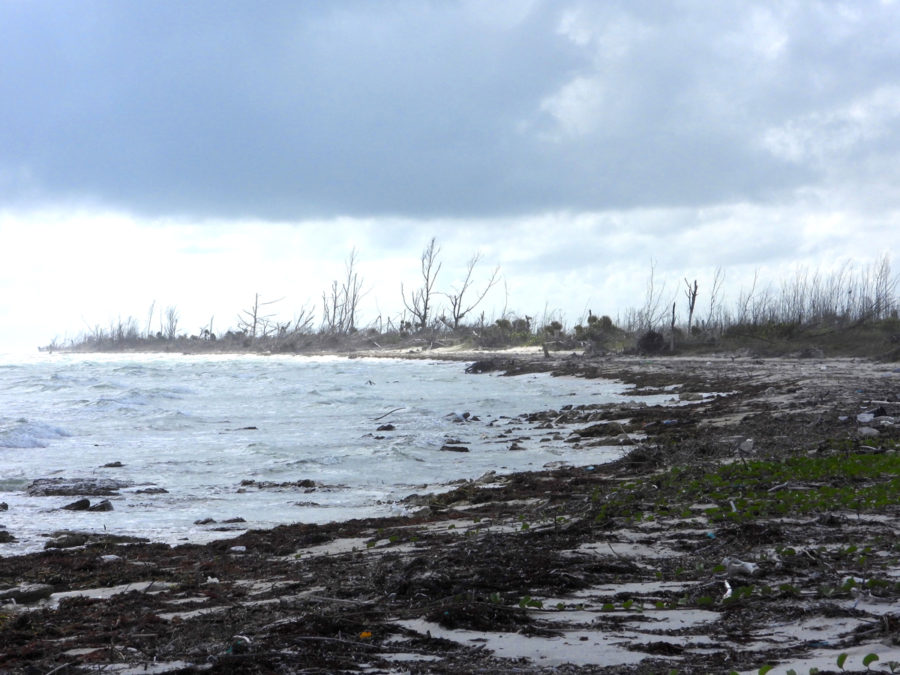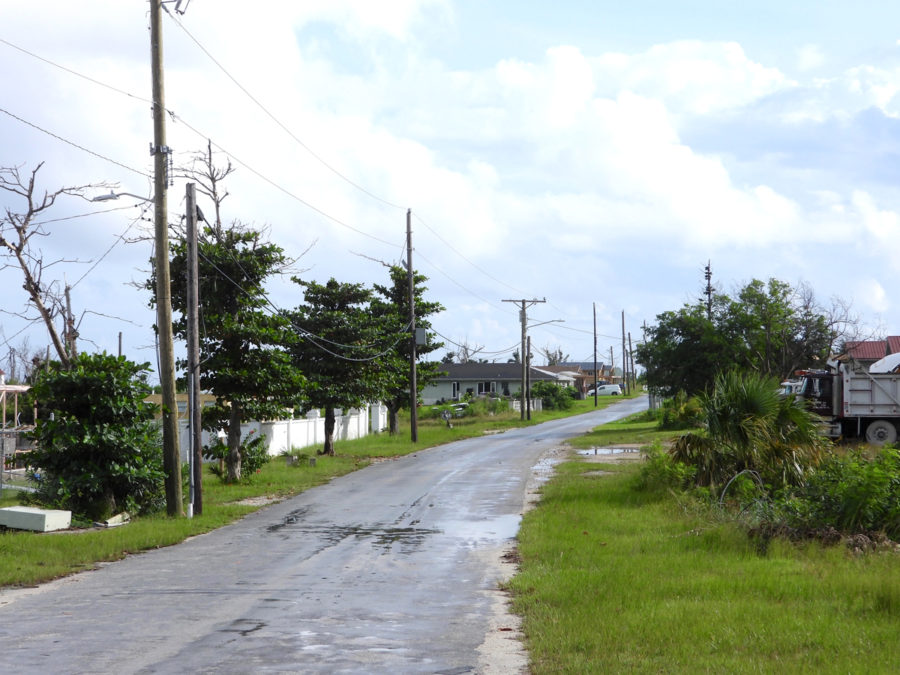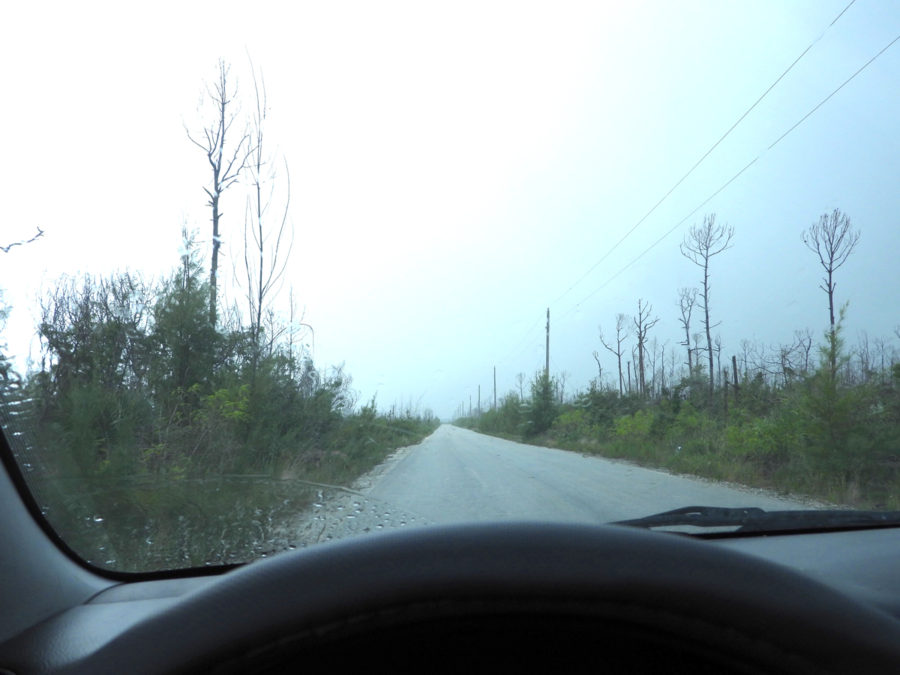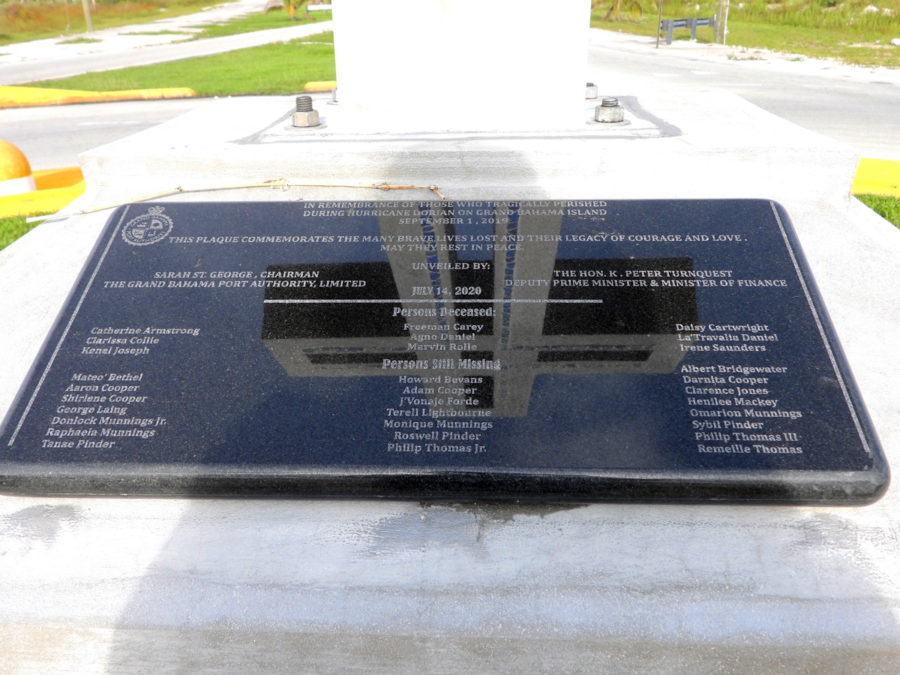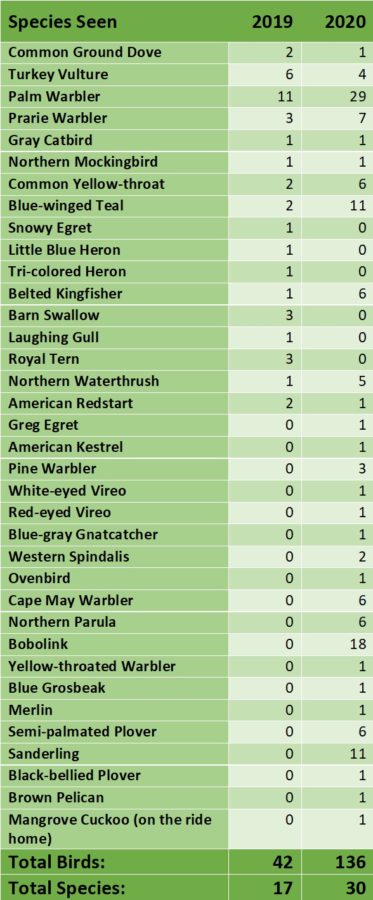Martha Cartwright and her five birding companions visited the East End of Grand Bahama (GB) Island one month after Hurricane Dorian in 2019. They have returned one year later to look for signs of recovery and check on the bird populations after the devastating Category 5 Hurricane. Find out what they saw and how felt about the new, recovering landscapes in GB.
It was one year and one week after our first birding trip following Hurricane Dorian, on October 3, 2019. We were the very same group of six birders, revisiting the eastern area of Grand Bahama to see what changes had taken place in one year. The difference, however, was that this year we wore masks and traveled in three cars, rather than in one bus.
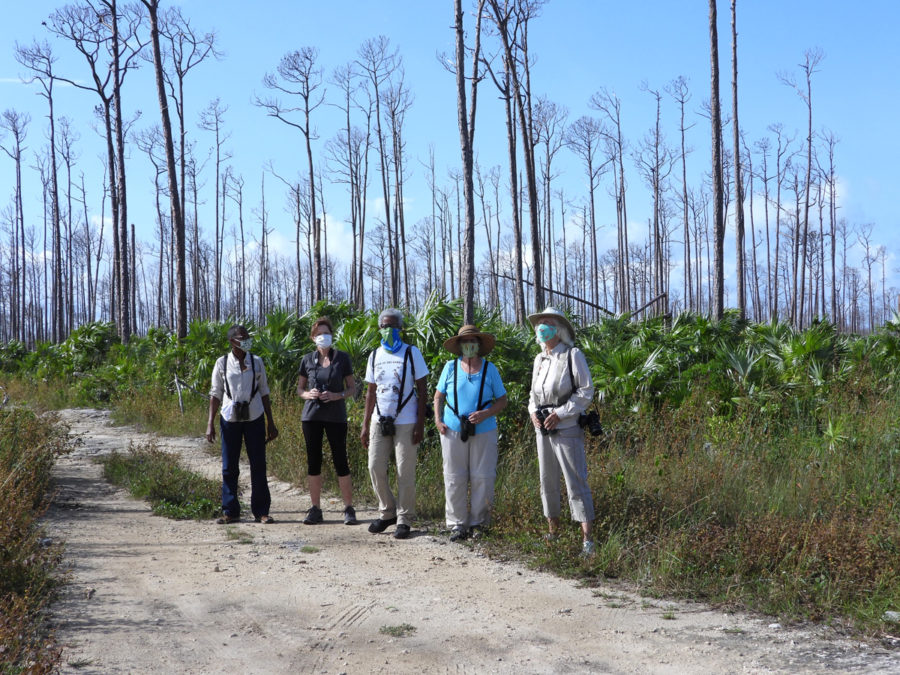
The Numbers, Compared
We retraced our footsteps of a year ago, stopping for the same amount of time at each location; this helped us to make comparisons. In 2019 we saw 17 species with a total of 42 birds. In 2020 we saw 30 species with a total of 136 birds. For those of you interested in the details, here is a spreadsheet showing the species and the numbers spotted each year The “bush” was thriving and home to small birds.
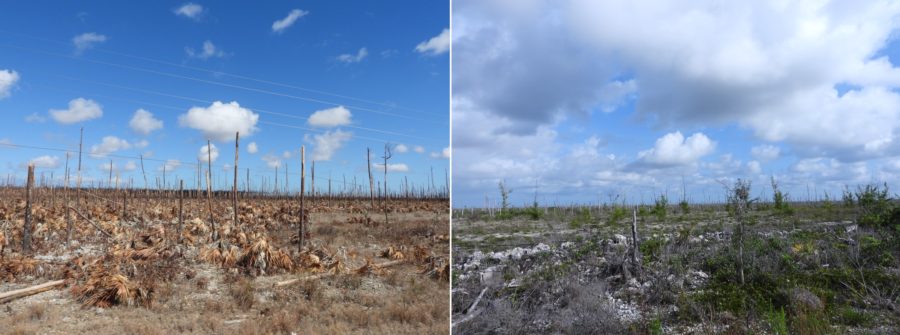
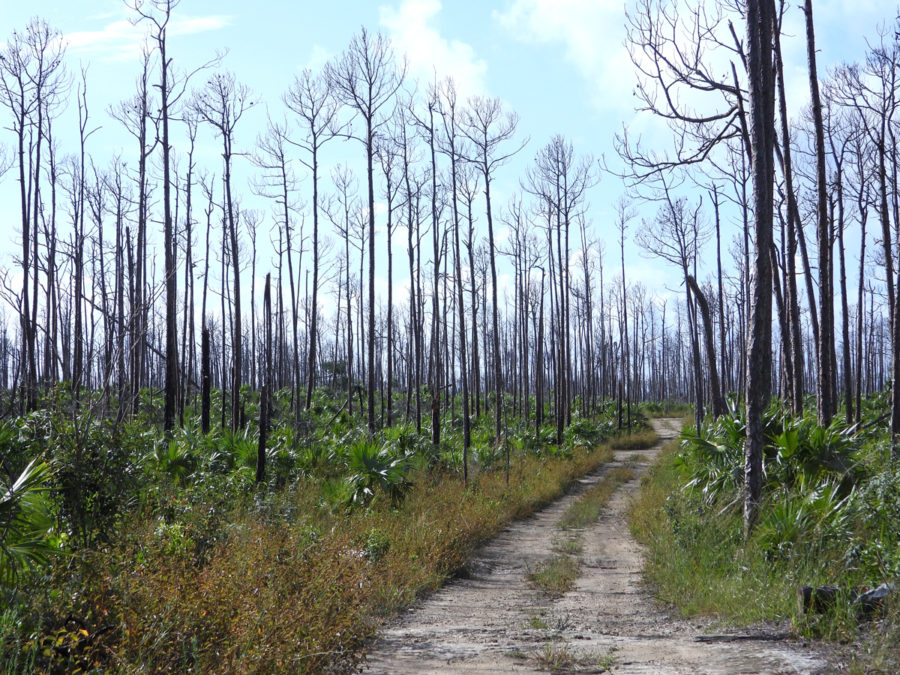
The wetlands around Stat Oil were practically empty of wading birds and ducks; we saw a couple of Great Egrets and a few Blue-winged Teals in the wetlands to the east. Below are pictures from this year’s trip—you can see photos from the same locations one year ago here. The pictures speak for themselves.
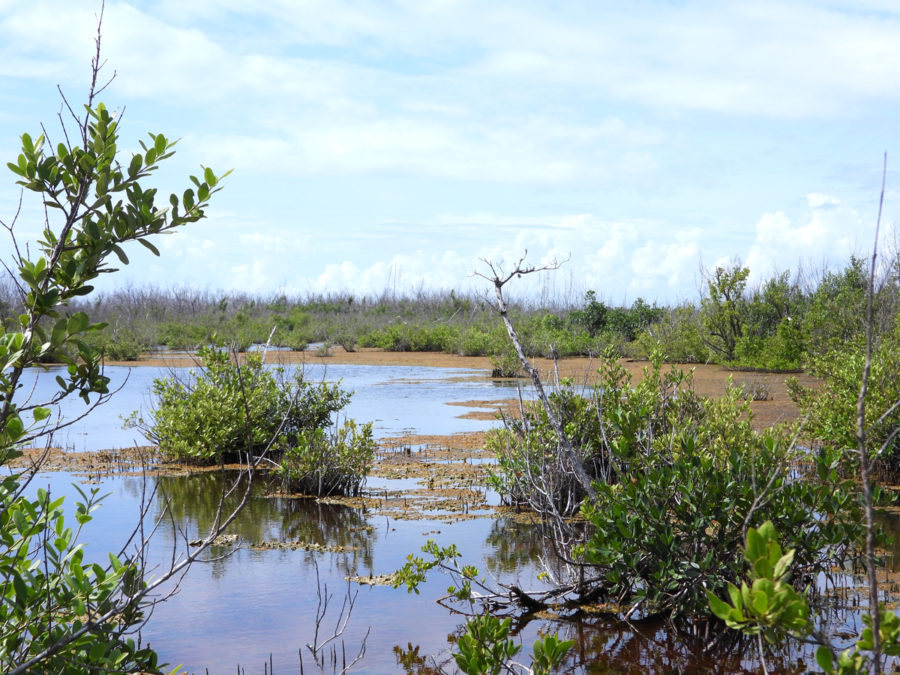
A Changed Landscape, Sad Memories
That evening after a full day “out east” we shared our thoughts, and like the contrasts in the habitat, our feelings ran the gamut from positive and upbeat to depressed and sad. For me personally, despite new growth low to the ground, more species and more birds, the day was heartbreaking. I kept remembering years and years spent out east with my late husband, with birding friends. Sad to say, those days are gone. The places we visited then have been bowled over by Dorian’s tidal surge, and our remote beaches are no longer pristine.
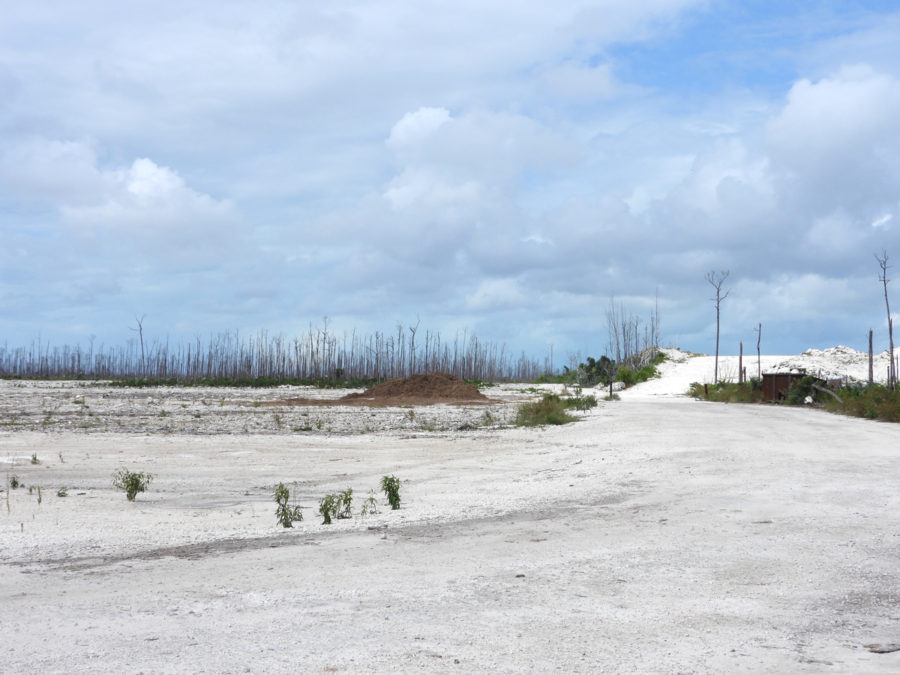
Erika Gates, our Guru, wrote an email to the group that evening, and I think it summarizes the day perfectly.
Erika Gates’ Thoughts: The Loss of the Pine Forest
I am glad that most of you saw many positive things in the recovery of the environment! But I was deeply saddened by the appearance and total loss of our magnificent pine forest ecosystem along with our Bahamian endemic bird species, the Bahama Warbler and the Bahama Yellowthroat, the latter depending on the edge habitat of the pine forest. The Olive-capped Warbler which totally depends on the pine forest is probably also lost to Grand Bahama! We will most likely see another endemic bird, the Bahama Swallow, a secondary cavity nester, move to Andros or South Abaco, looking for non-fragmented pine nesting habitat where a resident Hairy Woodpecker will have provided the cavities!.”
Yes, it was like a miracle to see young pine trees sprouting out of the ashes and devastation we looked at a year ago; however, to attain the height and maturity of the former pine forest to offer new habitat for the above bird species will take 30 to 40 years! And where will they come from? Abaco? The pine forest and National Park in South Abaco fortunately survived Dorian and good numbers of the above bird species have been observed there during the recent BNT survey.
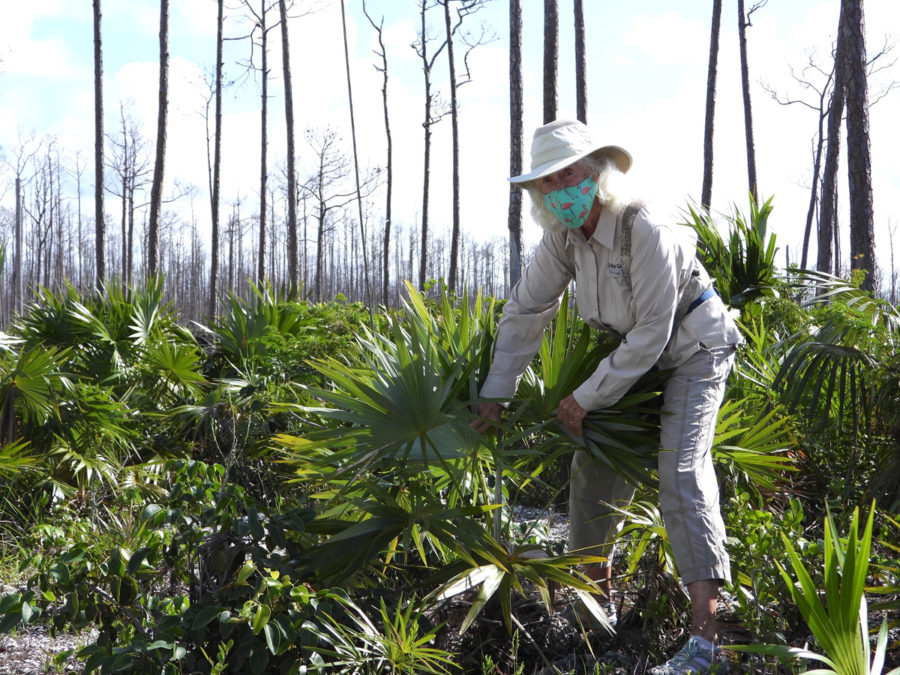
When I wrote my little book ‘Natives of the Bahamas—A Guide to Vegetation & Birds of Grand Bahama- in 1998, I wrote in my preface of a then recent conservation assessment of the terrestrial eco-regions of the Caribbean by the World Bank in association with the World Wildlife Fund. It stated that the unique Bahamian pine forest is one of the highly endangered ecosystems in the region facing threats from development! Who would have thought that after a two-day storm 22 years later, one of the largest Bahamian Pine forests (the largest being Andros, followed by Abaco and New Providence), where non-fragmented bird habitat covered approx. 250 square miles, would be no more!
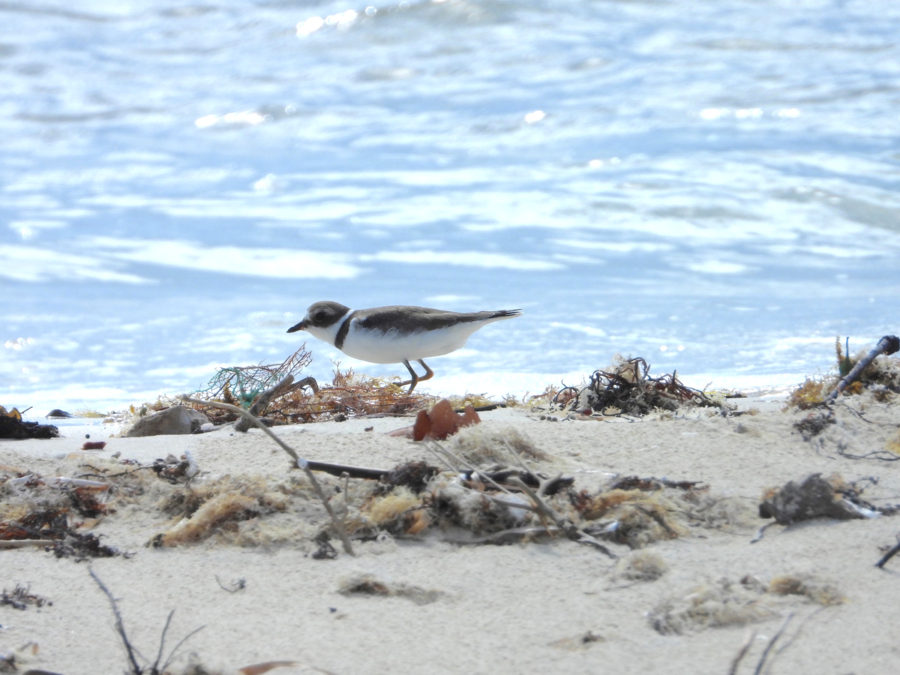
Yes, we observed a variety of beautiful fall migratory Warblers on our “One Year After” trip that we began full of hope that morning! We were delighted to record several resident species like Western Spindalis, Thick-billed Vireo, Blue-gray Gnatcatcher at Lucayan National Park’s Blackland Coppice and also found a few shorebirds along the Pelican Point shoreline!
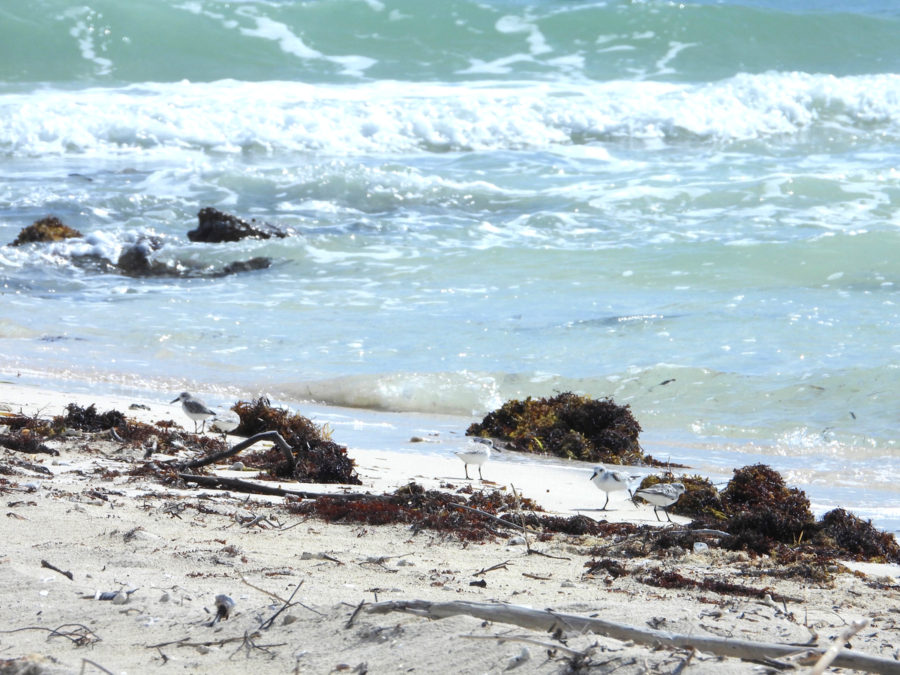
We had travelled 6 miles from Casuarina Bridge to Owl Hole Road along a lifeless pine forest and my expectations to find any live pines further east were disappearing. The pine forest habitat we surveyed close-up was a portion of Owl Hole road and the only resident birds we encountered were 3 Pine Warblers, with one male belting out his familiar song! It was music to my ears and also the highlight of my day!
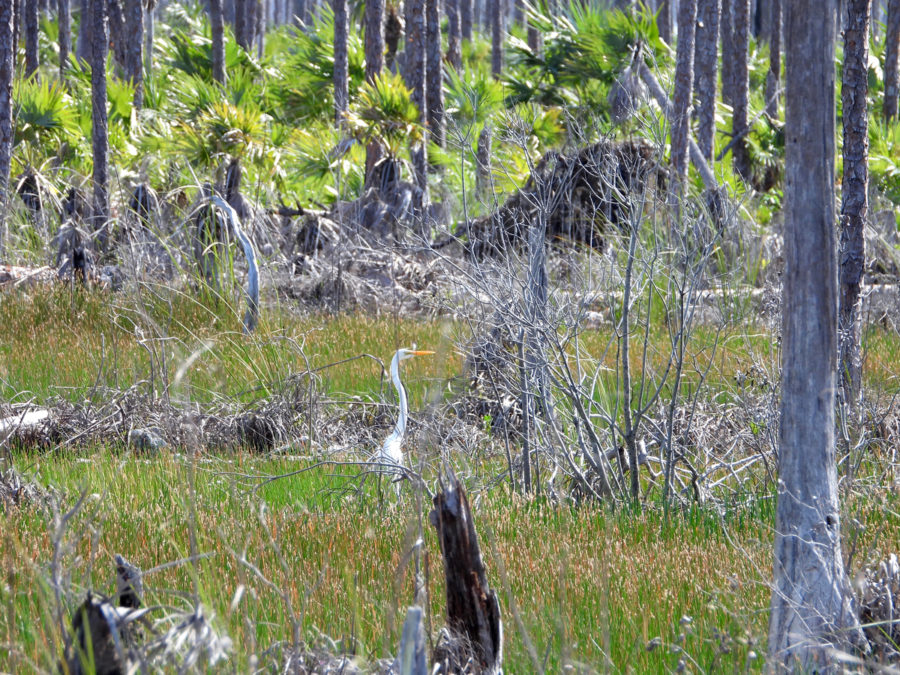
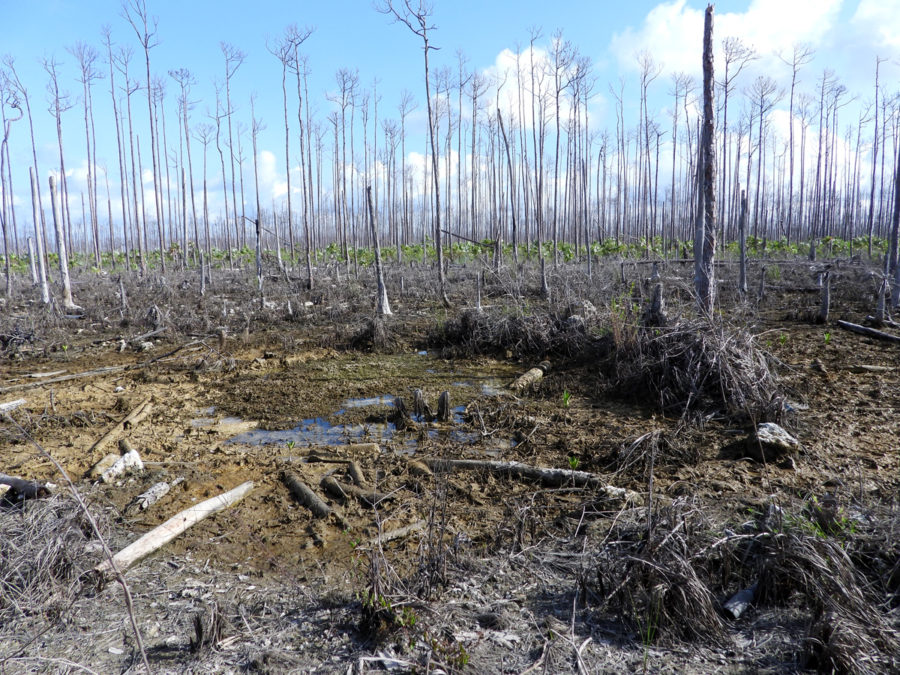
The Birders’ Mixed Feelings—Some Hope, Recovery Will Take Time
Bridget Davis: I was encouraged by what I saw. We had a major hurricane and forest fires that hit East End hard. The humans have not all gotten their homes repaired and livable yet. I was happy to see the reconstruction and repair of homes. I think with the salt water and oil intrusion it will be some time for the shore birds to come back. I feel hopeful about the warblers we saw and the green palm trees and new pine trees along the way. Good day for me—until next time.
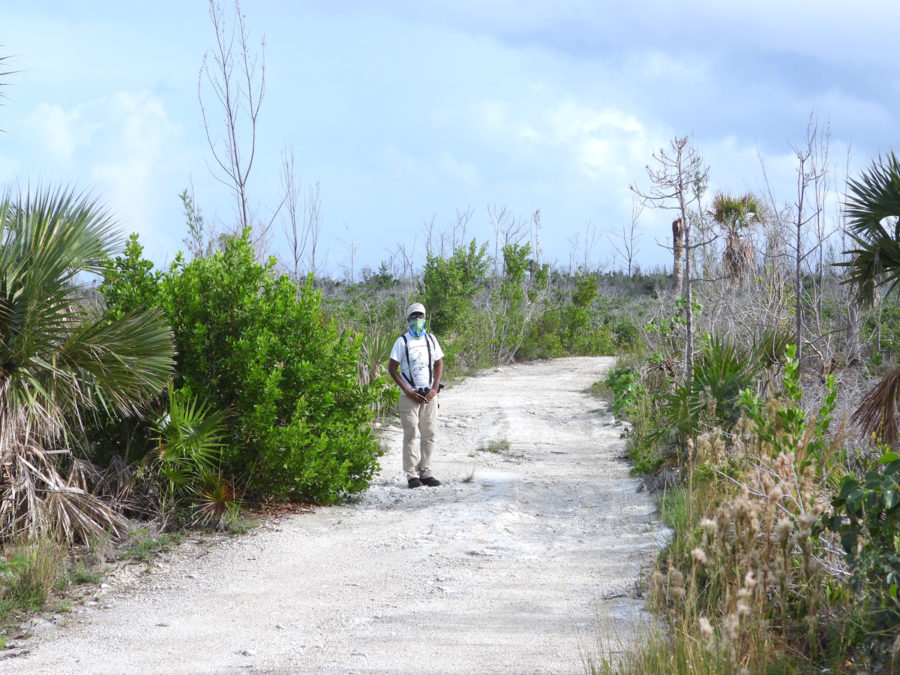
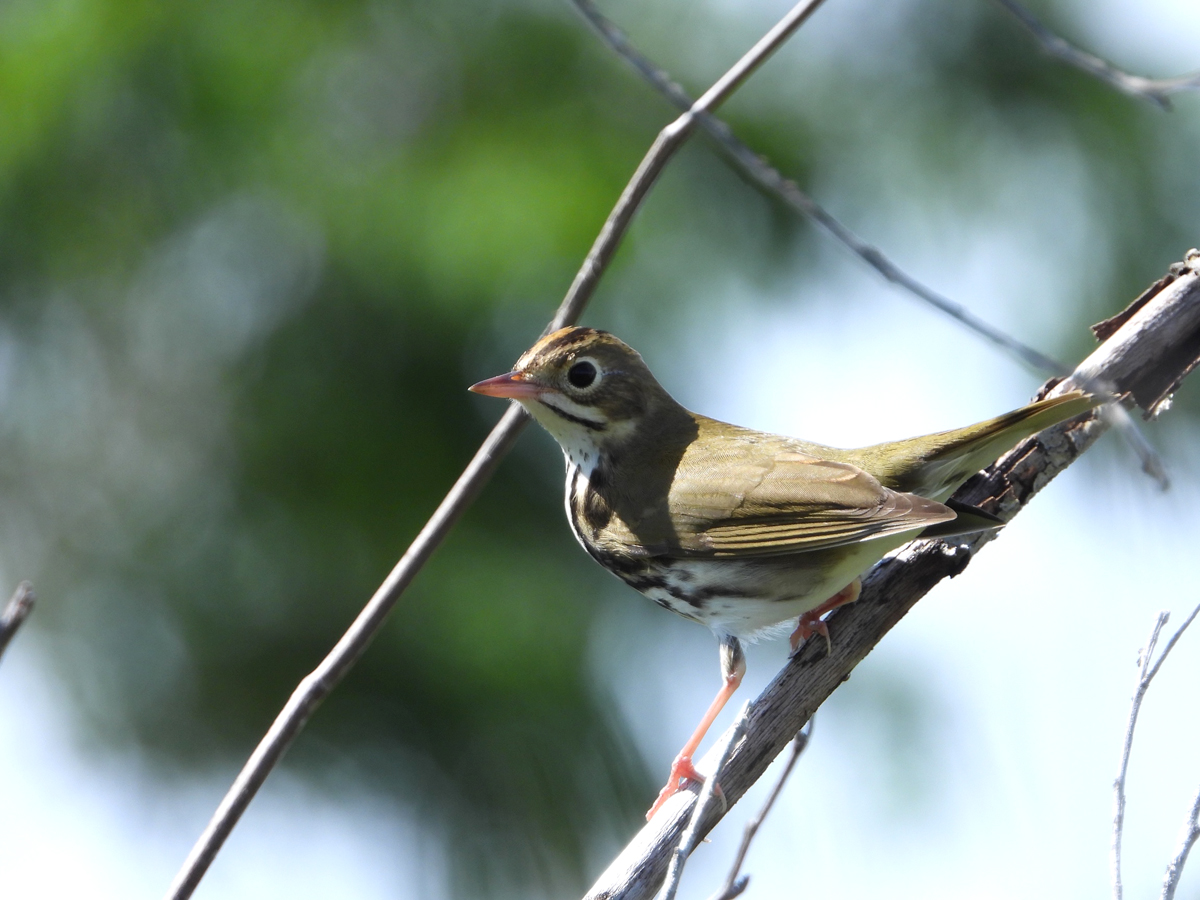
Delores Kellman: It was somewhat depressing; especially seeing the death of the Caribbean pine forest. Don’t think I will be around when it comes back to life.
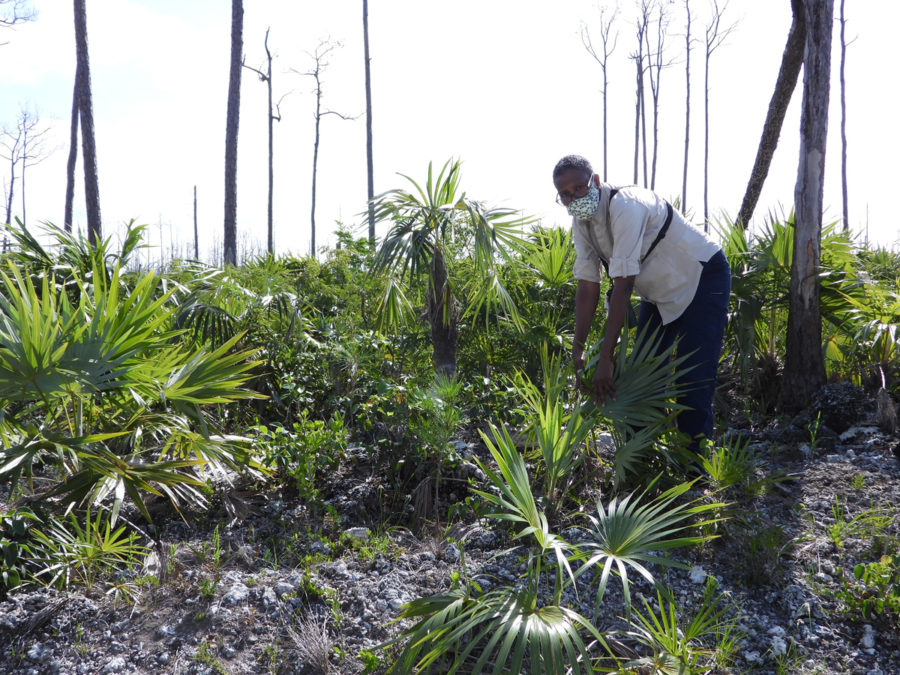
Gena Granger: I was encouraged by the greenery, remembering all the brown and black of last year, also with the numbers and quantities of birds. Though discouraged by the devastation of the pine forest, it was encouraging to see pine seedlings. A tribute to life really, the new, the young, foraging through the existing devastation making ready for the new generation!
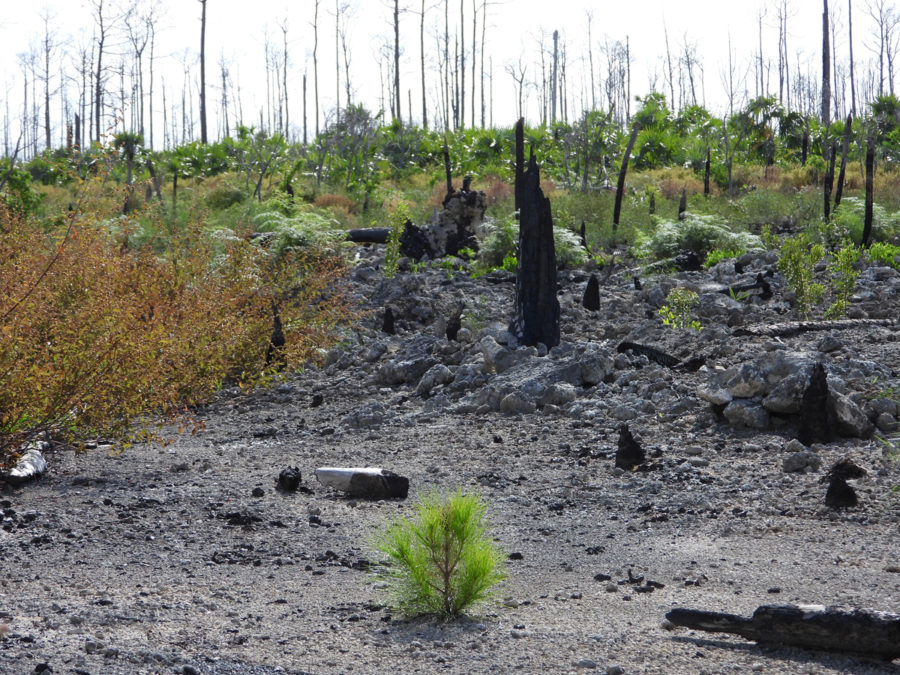
Shelagh Paton-Ash: I’m with Bridget—I guess we were in the optimistic car! When you think about it, Dorian was a cataclysmic event, but one year later, most of the plants are back, some birds are thriving, and many houses are rebuilt or in the process. It takes time to recover from something as catastrophic as Dorian.
Erika’s final comment: I look forward to birding with this group again, appreciating every bird in all the beautiful habitats that we are still so blessed to enjoy on our beloved island.
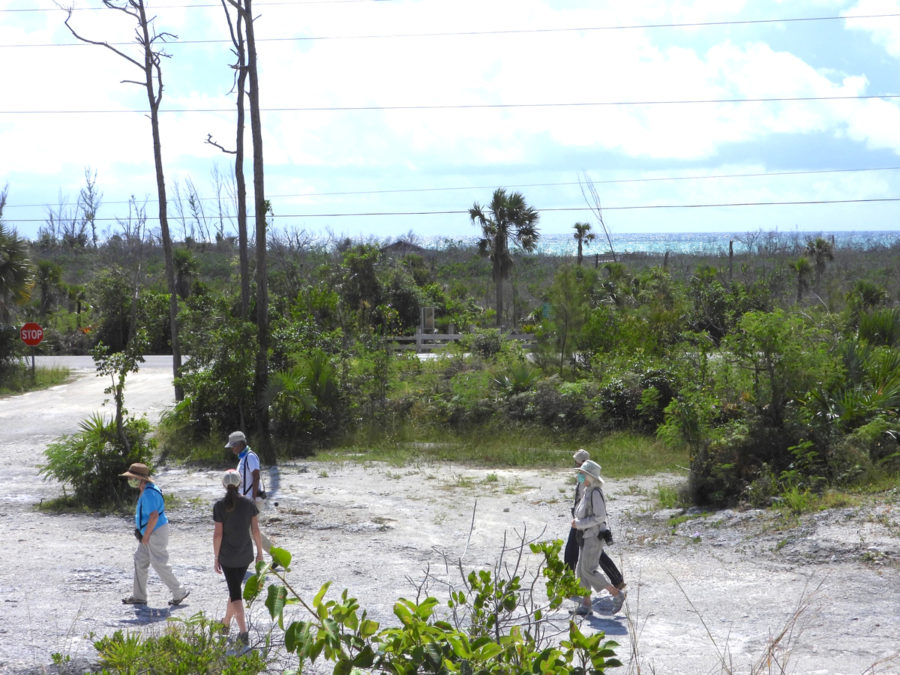
eBird Links for the Sites
- Owl Hole Road: https://ebird.org/checklist/S74679183
- Lucayan National Park: https://ebird.org/checklist/S74679428
- Wetlands West of Stat Oil / Equinor: https://ebird.org/checklist/S74679640
- Wetlands East of Stat Oil / Mt. Pleasant: https://ebird.org/checklist/S74685527
- Pelican Point Wetlands / Bend in the Road Beach: https://ebird.org/checklist/S74680264
- Pelican Point: https://ebird.org/checklist/S74679844
- On the ride home: https://ebird.org/checklist/S74732702 one Mangrove Cuckoo flew in front of Shelagh and Bridget’s vehicle.
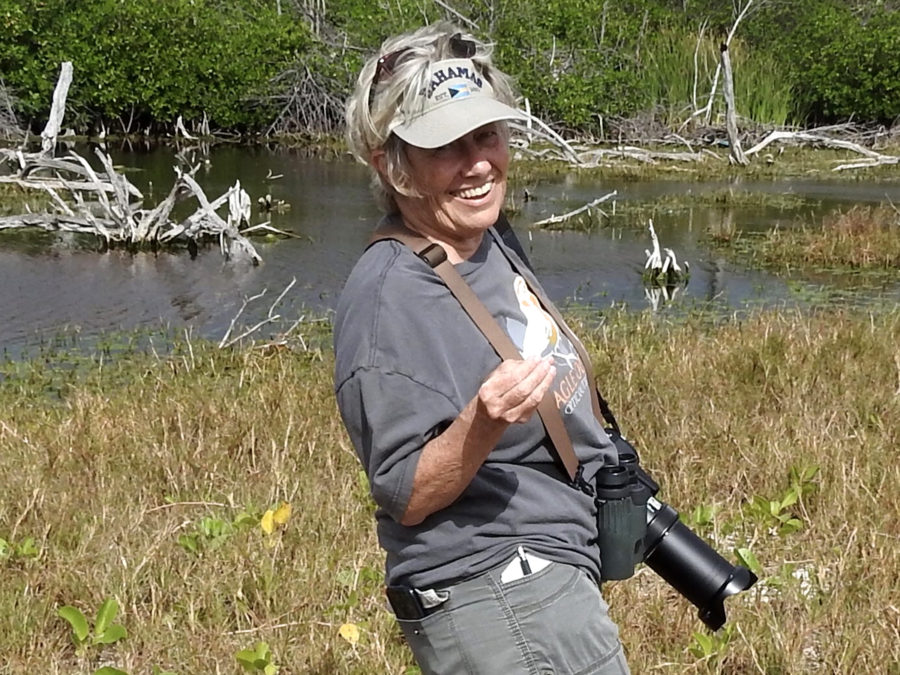
Martha Cartwright has been an avid birder on GB since 2014. She is particularly fond of shorebirds and participated in BirdsCaribbean’s Conservation Caribbean Shorebirds Workshop in Puerto Rico March, 2019. Together with bird guru-in-chief, Erika Gates, and their close group of Grand Bahama Island Birders, they regularly carry out birding excursions and counts in many habitats on GB and also do a lot of habitat restoration, outreach, and education about birds and nature on the island.
BirdsCaribbean is extremely grateful to all who have donated to our Hurricane Dorian Recovery Fund; donations are providing bird seed, nectars and feeders, replacing equipment and infrastructure lost in the storm and helping to fund bird and habitat surveys and restoration in Grand Bahama and Abaco. We are working with the Bahamas National Trust and other partners on this recovery work. Please click here or here if you would like to help with this work.
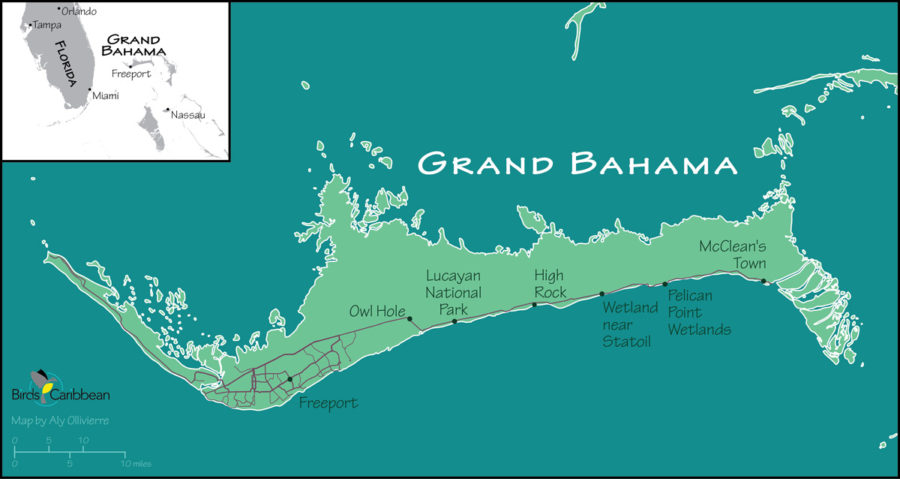
More photos from the 2020 revisit of the eastern area of Grand Bahama to see what changes had taken place in one year. (all photos in this article are by Martha Cartwright with the exception of the photo by Martha above)
